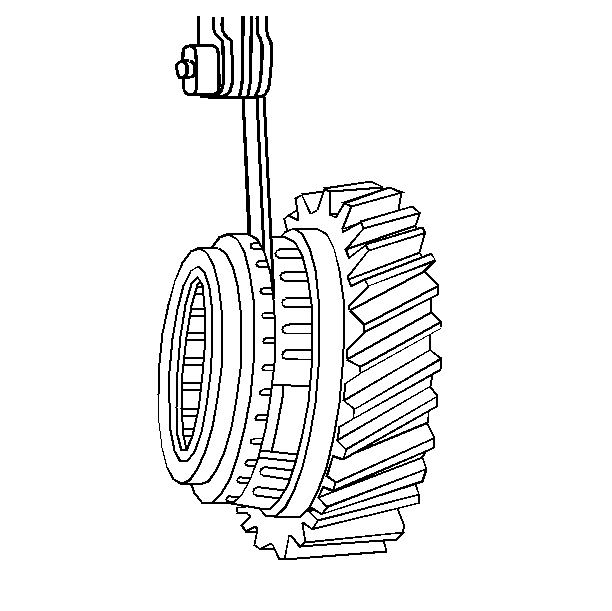- Clean all the parts in a suitable cleaning solvent. Air dry all
the parts.
Important: Do not spin the bearings without a lubricant.
- Lubricate the mainshaft bearings with Synthetic Manual Transmission
Fluid GM P/N 12346190.
- Check the bearings for rough rotation.
- Inspect the mainshaft gears for the following conditions:
| • | High spots (small-shiny spots on the gear teeth mating surface)
that could cause gear noise |
- Inspect related gear surfaces such as thrust faces and bearing
surface diameters.
- Inspect the mainshaft bearing surfaces for wear or damage.
- Inspect the synchronizer sleeves for a sliding fit on the synchronizer
hubs. The 3rd and 4th gear synchronizer hub must have a force fit on the mainshaft
splines.
- Replace the 3rd and 4th gear synchronizer hub that does not require
a force fit on the mainshaft splines.
- Inspect the synchronizer springs and the struts for damage.
- Inspect the synchronizer rings for excess wear.
- Inspect the synchronizer clutching teeth for the following conditions:

- Measure the cap between
the verical faces of the blocking ring teeth and the synchronizer clutch gear
as follows:
| 12.1. | Assemble the correct blocking ring with the synchronizer clutch
gear. |
| 12.2. | The blocking ring must be fully seated on the gear. |
| 12.3. | Use a feeler gauge to measure the gear gap. |
| • | 1st gear (between the hub and outer ring) 1.37-0.31 mm (0.054-0.012
in) |
| • | 2nd gear 2.16-1.14 mm (0.085-0.045 in) |
| • | 3rd gear 1.73-0.76 mm (0.068-0.030 in) |
| • | 4th gear 2.10-1.19 mm (0.079-0.047 in) |
| • | Overdrive gear 1.83-1.07 mm (0.072-0.042 in) |
| • | Reverse gear 2.24-1.47 mm (0.088-0.058
in) |
- Inspect the mainshaft drive gear clutching cones for synchronizer
ring metal transfer.
- Inspect all the gear teeth for excess wear.
- Remove nicks and burrs with a soft stone or a crocus cloth.
- Replace any components that are bent or show signs of excessive
wear. Inspect the mating parts.
- Inspect the bearings and the bearing surfaces for the following
conditions:

